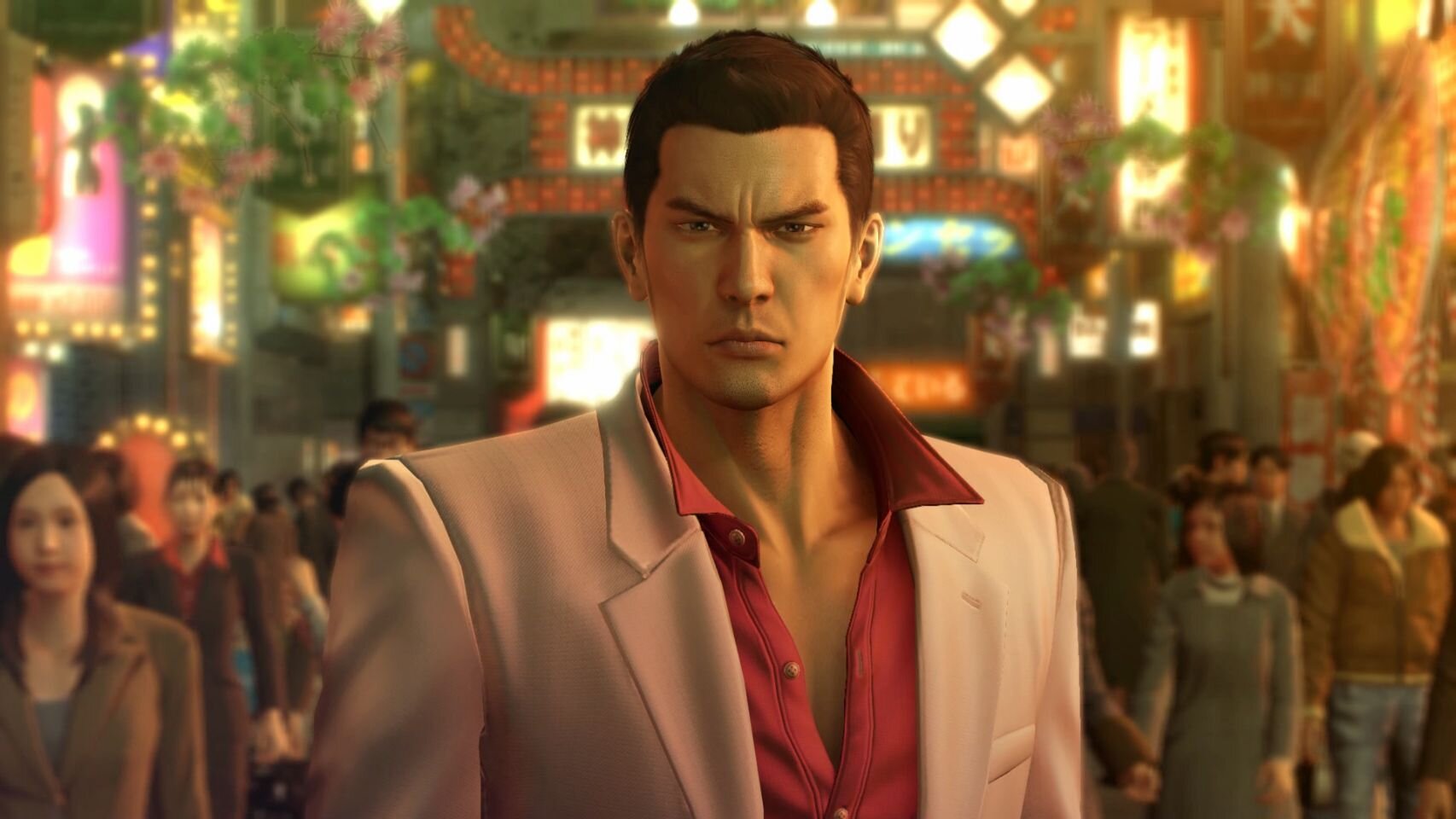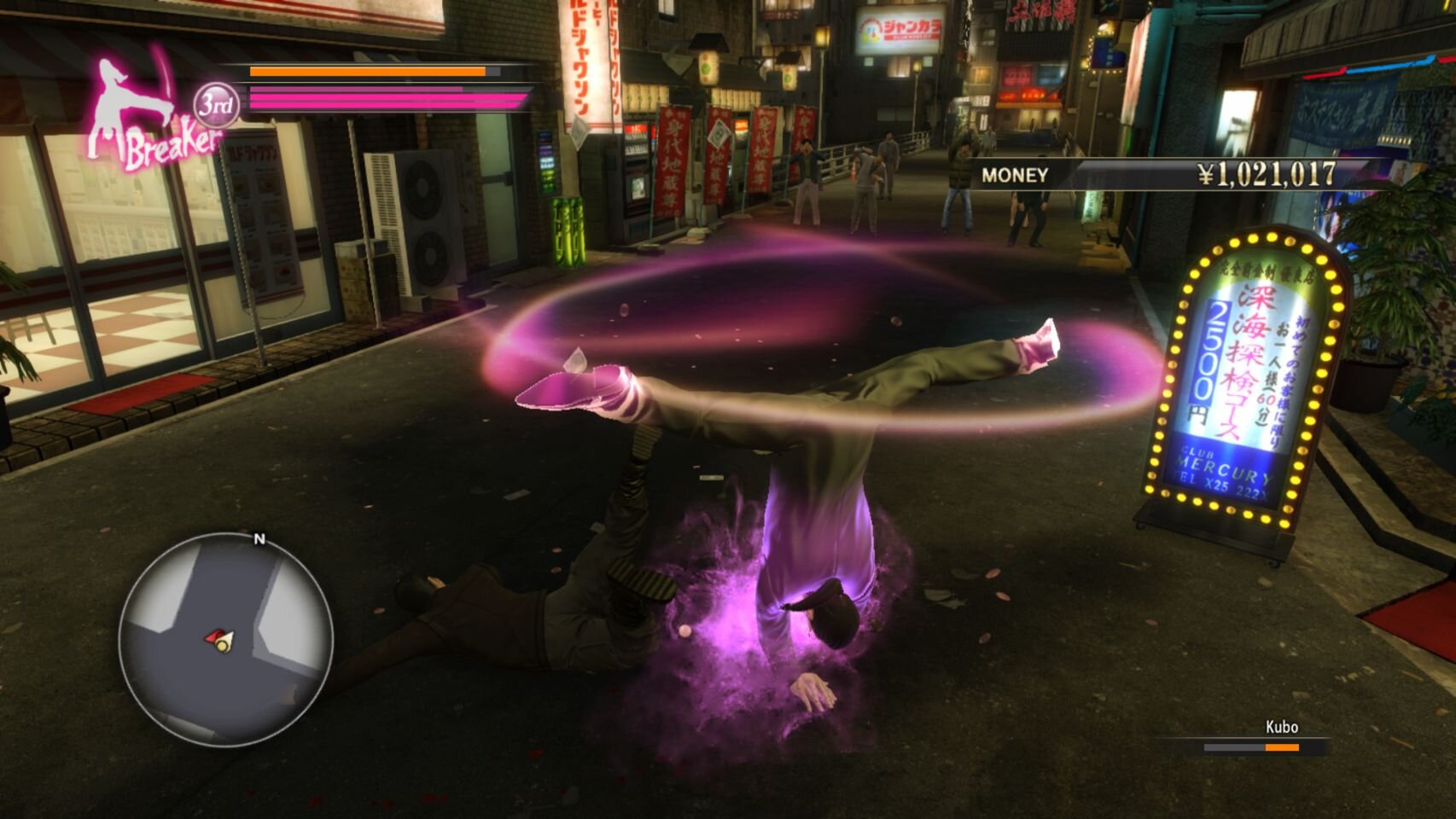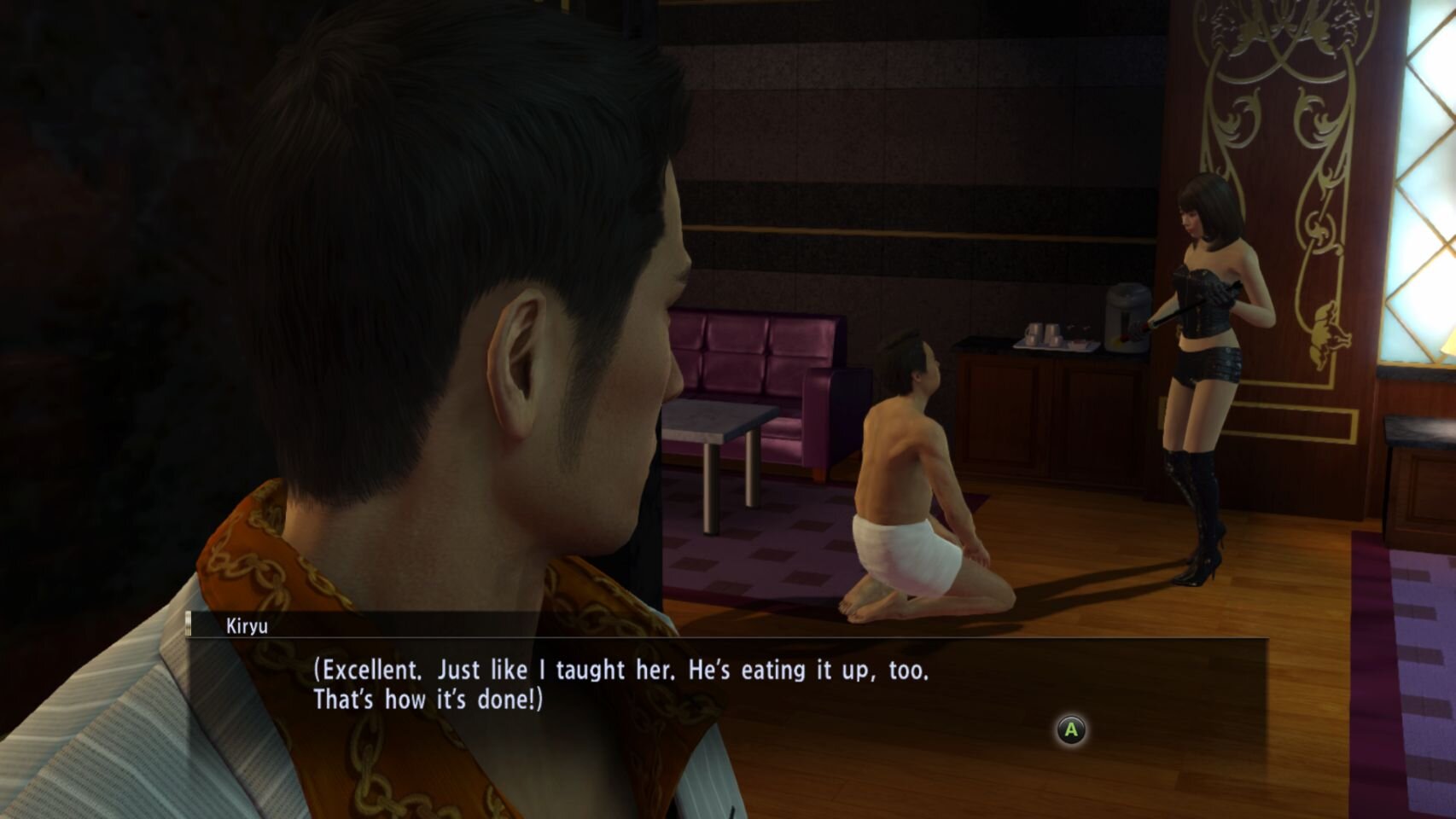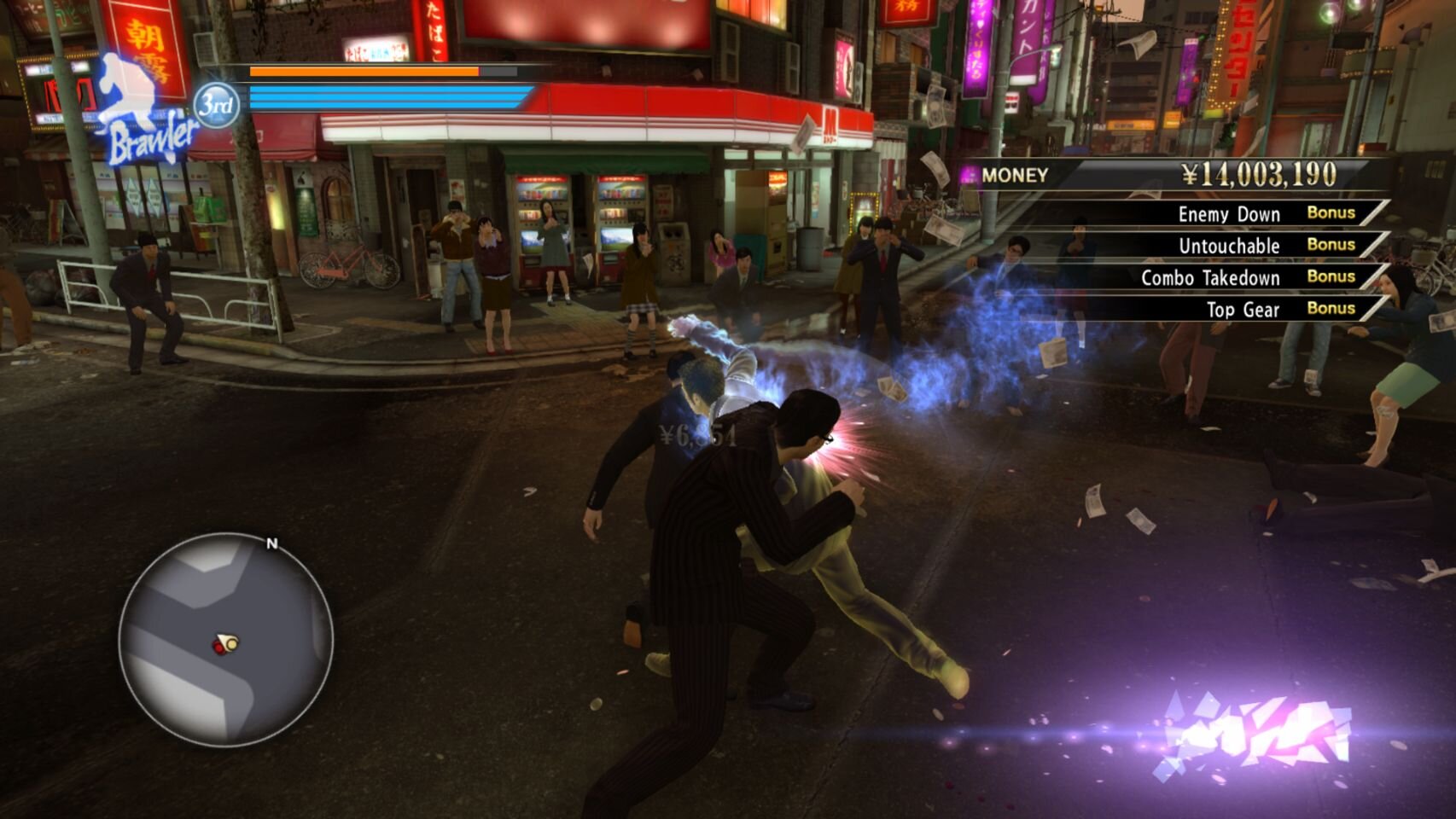You never truly leave the family.
Yakuza was always a franchise I had hoped would see a release on Xbox One, and when it was announced that not only was the series making its debut on the platform, it would do so via Game Pass, further showing why it is one of the best values in gaming today. While we now wait patiently for the follow-ups in Yakuza: Kiwami and Kiwami 2 to drop on the system, Yakuza Zero, the chronological starting point for the stories that follow, has finally released on Xbox and might be the first entry into the beloved series for many. It’s brutal, it’s violent, it’s goofy as all hell, but it’s also an incredible trip that needs to be taken.
Taking place in 1988, in the neon-infused city of Kamurocho, you’ll find yourself in a power struggle between many different Yakuza factions. You’ll also visit Sotenbori as well, but when it really comes down to it, the plot is centered heavily around the former. You’ll trade-off between two protagonists; Kazuma Kiryu, and Goro Majima. With Zero being a prequel to the events of the first game, it sets in motion a lot of where certain characters were at the start of that original first game. While fans of the series may take more away due to the winks and nods to certain characters that also appear later in the series, you can easily use Zero as a jumping in point and not feel like you’re lost or missing out. With Zero being a prequel, it allows each of the characters present in the first game to get a more fleshed-out backstory, such as how Majima got his eye-patch, and his transformation into the man present in the original game.
Much of the story around Yakuza Zero is about different Yakuza factions looking to acquire a patch of land that hasn’t been able to be sold due to the owner of it being unknown. This has caused different families to use various methods to seek out its owner in a mad dash to own the land and the benefits that come with it. While Kiryu and Majima each start out with a narrative each their own, I found it extremely satisfying with how their stories both eventually crossed paths, even if “their” eventual meeting isn’t quite what you’d hope it would be. The way the stories come together is vastly entertaining, and while some of the dialogue is a bit cheesy, I found much of it obsessively gripping and wildly enjoyable. I’ve been aware of the series for some time, but this was my first big jump into its impressive world.
The story also finds itself in deep with the standard tropes that come with the genre; being framed for murder, the hit-man who can’t come to kill his target, to the constant betrayals from those close to you; wondering who you can truly put your trust in. Yakuza Zero does a great job at keeping these moments coming, and while the pacing of the story can feel a bit uneven at times, the presentation, voice work, and interesting characters still come together to offer up a truly engaging title. This is also true of many of the side quests and does a great job at not just giving you things to do, but fleshing out the personalities of both main leads in ways the main story doesn’t have a chance to do.
Regardless of either Kiryu or Majima’s stories, you’ll be introduced to a vast array of strong supporting characters, and even stronger villains. The Dojima clan is a constant foil to Kiryu, with each of its clan leaders offering Kiryu a very personal stake in the events that play out. Kiryu may seem somewhat dull and flat initially, but much of that is to build him up to a point where you see him transform over the loss and tragedy that awaits him. The same can be said for Majima as he might see the most growth between the two during the story. His personal connection with a woman he is protecting truly brings out some great moments from him, as does his transformation into "The Mad Dog of Shimano" that the following games depict him as.
One aspect to Yakuza that has kept it a popular series is the way it is wildly over the top and consistently odd in its humor. Whether it’s the strange man that is constantly dancing around in his underwear, the chicken you can put in charge of some real estate, or the mission to sneak around some women to buy a young boy an adult magazine, and you have a game that embraces the bizarre. There are countless sub-stories that involve some insane moments to occur that you won’t exactly be too sure if you’re going to meet that woman who left messages on the bathroom wall, or if that cult is really brainwashing that poor young girl, or if your efforts to train a dominatrix will truly make her life better. There are so many fun and engaging missions that I often lost track of time when my character had very important things to do in the main story.
Each character will also take to their respective city in different ways. Kiryu will find himself digging into the real estate business, whereas Majima will have his hands full with several attractive women as he looks to build his cabaret business. These distractions from the main story are ways to secure some serious bank and can be ignored entirely if you just don’t get on with them. There are also countless other ways to make money in casino’s, underground fights, or winning encounters against a sizeable foe called Mr. Shakedown. If earning money isn’t your main focus, you can sweet-talk girls at the telephone club, watch bikini-clad videos, or just play some classic SEGA games at the arcade. There is a tremendous amount of attractions to keep you busy each with their own controls and gameplay gimmicks. While I didn’t find all of them terribly enjoyable, such as singing at the Karaoke bar or dancing at the Disco club, I did find some favorites in bowling or playing the crane game at the arcade. If you are really good at the bowling, I suggest sticking with it since the pay-off is clucking amazing.
Another way to make money is simply fighting in the streets, a method that never runs dry. Nearly every alley or street is filled with goons, hooligans, or other gangs that are itching for a fight, dropping hundreds of thousands of yen with a single punch to their face or via the crunch of a well-placed strike with a bat. Fighting is via different fighting styles that have a wealth of upgrades to buy, some costing a hundred million yen, something that feels very out of reach until you start pushing through the story or being successful in your money-making schemes. Each style varies wildly from simple hand to hand combat, dance fighting, or swinging a steel bat with purpose. Out of the various styles each character can learn, I found myself sticking to one, possibly two, and sinking as much money as I could into them to make my hits crunch harder, or offering me more health or additional combat maneuvers. You can seek out additional training to dig into more of their respective skill trees as well, further enhancing how powerful each style can truly become.
Kiryu and Majima both have access to four unique styles, but their final style is locked behind completion of their respective real estate and cabaret storylines. Each style can be accessed during combat, allowing you to change the flow of the fight on a whim. As you throw down, you’ll earn heat, which powers up special attacks that can cripple health bars and knock out your opponents with extreme brutality. Each environment will be loaded with numerous weapons, from traffic cones, flashy signs, to something as simple as a bicycle, that can all be used as weapons to bash into and clobber anyone that gets in your way. In fact, watching Majima raise a bike above his head and then slam it down across the face of some random goon is as satisfying the 20th time as it is the 100th. The fights in both the active combat and the numerous boss encounters are vicious, bloody, and dramatically violent, making good on its M for mature rating.
I will say that while combat is very satisfying, it’s not without its problems. Facing off against several goons with guns isn’t terribly fun as it’s very easy to get shot and see your character wince and drop in pain, only to get shot immediately after and go through the same animations all over again, not to mention the huge drop in health with each bullet. The game can feel a bit clunky, which translates into your character also getting caught on parts of the environment too easily, and this clunkiness in battle is mostly an annoyance where it can be tough to keep focused on a character with no lock-on, causing some attacks to miss your target because you moved slightly out of the way. The Y button is used for your brutal heat attacks, and since there is no lock-on, the Y prompt can go away in a split second, causing you to perform the standard Y attack and not the finisher you wanted. Since this is simply a port of a five-year-old game, I wasn’t expecting any quality of life upgrades, but the game’s overall design simply just feels much older than it is. That’s not to be a huge knock against the game since I really enjoyed my time with it, but more of a criticism on the mechanical designs present in the series.
From a visual standpoint, this game can often be very impressive. Characters often have nice crisp details, and while some NPC’s around the city can feel somewhat lazy, the most important moments of the game still shine extremely bright. The city itself is packed full of color and charm but there are some tight corners and interiors that cause the camera to not be terribly great, such as trying to run out of Little Asia and seeing Kiryu bounce from wall to wall or get stuck on some small detail.
Despite my nit-picks, I adored my time with Yakuza Zero. It’s a franchise I’ve wanted to dig into for some time now and I wasn’t disappointed. Sure, I wish the game had a bit more polish and felt more fun to control in both your movement and combat, but I truly fell in love with the city and its characters, and the lives of both its leads. For as violent and bloody as Yakuza Zero can get, it has some strong emotional moments that can be in contrast with its silly and off the wall humor that somehow works incredibly well together. If you have yet to experience Yakuza, then Zero is certainly worth your time and thanks to Game Pass, it’s only a click away.
Yakuza: Zero was downloaded via Game Pass by the reviewer and played on an Xbox One S.
All screenshots were taken on an Xbox One S.













